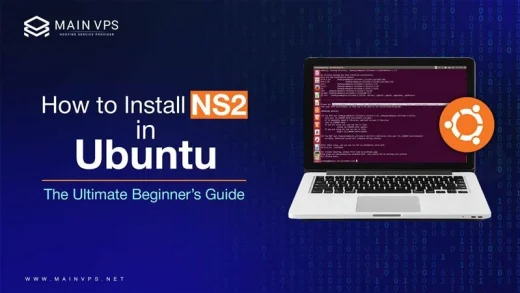
Prior to 2020, the most suitable option for system administrators when looking for a reliable, cost-free, and enterprise-ready Linux distribution was CentOS. However, in 2020, everything changed when Red Hat announced CentOS would no longer receive traditional support and instead pivot towards CentOS Stream. This change signifies a shift in focus toward a rolling-release model intended to showcase upcoming features of Red Hat Enterprise Linux (RHEL).
That’s where AlmaLinux entered the scene.
If you’re trying to decide between CentOS and AlmaLinux in 2025, this guide will break down everything—features, stability, community, performance, and long-term viability. Let’s dive in
1. What Happened to CentOS?
Before 2021, CentOS was a binary-compatible clone of RHEL, loved for its:
- Stability
- Long-term support (up to 10 years)
- Enterprise-grade reliability
But now? CentOS Stream has replaced the original model. Instead of being “downstream” of RHEL (i.e., a stable release), it’s now upstream, meaning it receives updates before they land in RHEL. That makes it more of a testing ground than a rock-solid server OS.
🚫 Result? CentOS is no longer suitable for users who want a long-term, stable server environment.
2. What Is AlmaLinux?
AlmaLinux was born from the ashes of CentOS, launched by CloudLinux Inc. as a 1:1 binary-compatible fork of RHEL—just like CentOS used to be.
Key highlights:
- 100% free and open source
- Designed as a direct CentOS replacement
- Supported by a nonprofit foundation
- 10 years of guaranteed support (with security and bug fixes)
💡 Fun fact: “Alma” means “soul” in Latin—meant to be the “soul” of CentOS reborn.
3. CentOS Stream vs AlmaLinux: Quick Comparison
| Feature | CentOS Stream | AlmaLinux |
|---|---|---|
| Stability | Rolling-release (less stable) | RHEL-clone (very stable) |
| Use Case | Devs, contributors to RHEL | Production, enterprise servers |
| Release Cycle | Upstream of RHEL | Downstream (same as RHEL) |
| Support Timeline | Shorter, unclear timeline | 10 years |
| Community Support | Medium | Growing fast + corporate backing |
| Developer Backing | Red Hat (IBM) | AlmaLinux OS Foundation (nonprofit) |
| Security Updates | Faster, less tested | Enterprise-grade patches |
| Migrations | Requires caution | Seamless from CentOS |
4. Use Case Comparison: Which One Fits Your Needs?
For Enterprise or Production Servers: Go with AlmaLinux
Why? Because production systems need:
- Long-term support
- Predictable behavior
- Timely, well-tested security patches
AlmaLinux checks all these boxes, and it’s trusted by hosting providers, cloud vendors, and IT teams worldwide.
For Developers & RHEL Contributors: Consider CentOS Stream
If you’re testing apps that will eventually run on RHEL or you’re contributing upstream, CentOS Stream gives you early access to the latest RHEL changes. But be cautious—it’s not designed for mission-critical deployments.
5. Community and Corporate Backing
CentOS Stream:
- Backed by Red Hat (and indirectly, IBM)
- Moderate community involvement
- Focused more on innovation and contributions
AlmaLinux:
- Backed by CloudLinux Inc. (initially funded)
- Now governed by the AlmaLinux OS Foundation (independent nonprofit)
- Strong focus on community governance
- Transparent roadmap
💬 Verdict: AlmaLinux’s community-first approach makes it more future-proof for production use.
6. Security and Updates
Security is where the difference hits hardest.
CentOS Stream:
- Gets updates before RHEL
- Can be unstable or buggy (intended for development use)
AlmaLinux:
- Follows RHEL patches closely
- Prioritizes stability and secure deployments
🔐 Security-conscious environments should always lean toward AlmaLinux.
7. Performance and Compatibility
Both distros use the same Linux kernel families and packages (thanks to their RHEL roots). So in terms of:
- File system support
- Software compatibility
- Kernel behavior
They are nearly identical—until you factor in how cutting-edge CentOS Stream might be at times, which can introduce compatibility issues.
📌 Conclusion: AlmaLinux provides more consistent, tested performance.
8. Migration: Moving From CentOS to AlmaLinux
Already on CentOS 7 or CentOS 8 and want to switch? Good news—you can easily convert your system using AlmaLinux’s migration tool.
bash
curl -O https://raw.githubusercontent.com/AlmaLinux/almalinux-deploy/master/almalinux-deploy.sh
bash almalinux-deploy.sh
🚀 The process is smooth, and you retain your apps, settings, and services.
9. Support & Future Roadmap
CentOS Stream:
- Will continue as a rolling-release RHEL preview
- No long-term support commitment
AlmaLinux:
- Offers full support through 2033 (for each release)
- Regular updates and community-led improvements
Forward-thinking? AlmaLinux is being adopted by major hosting platforms and vendors as the default CentOS replacement.
Final Verdict: CentOS vs AlmaLinux
If you’re looking for a stable, reliable, enterprise-grade operating system, AlmaLinux is hands down the best choice today.
| Use Case | Recommended Distro |
|---|---|
| Production Servers | ✅ AlmaLinux |
| Web Hosting Platforms | ✅ AlmaLinux |
| Internal Business Applications | ✅ AlmaLinux |
| Experimental Dev/Test Environments | 🧪 CentOS Stream |
| Contributing to RHEL | 🧪 CentOS Stream |
FAQs
1. Is AlmaLinux a fork of CentOS?
Not exactly. It’s a RHEL fork like CentOS used to be, but it was created from scratch after CentOS Stream replaced traditional CentOS.
2. Is CentOS still safe to use?
CentOS Stream is safe for development but not recommended for production due to its rolling-release model.
3. How hard is it to migrate to AlmaLinux?
Very easy! Use the one-line script to convert from CentOS 8. It’s designed to be a seamless transition.
4. Will AlmaLinux stay free?
Yes, it’s governed by a nonprofit foundation and committed to remaining open source and free.
5. Can I use AlmaLinux in the cloud?
Absolutely. Many cloud platforms support AlmaLinux images.
Ready to Deploy Your Server with Confidence?
Whether you choose CentOS, AlmaLinux, or any other OS, MainVPS gives you the performance, stability, and support you need to build and grow online.





